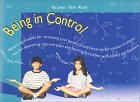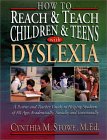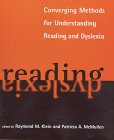
|
Being In Control: Natural Techniques For
Increasing Your Potential and Creativity For Success in School. Also For
Improving Concentration and Learning in Children with ADHD and Dyslexia by
Jason Mark Alster
Editorial Reviews:
Table of Contents : The problem, Put on a happy face,
I'm ok you are ok, Affirmations, My diary of memories, Proper nutrition,
A walk in the park, Using your imagination, To draw a picture, My visual relaxation exercise,
My sense of hearing, My sense of touch, A water bag for relaxation, My sense of smell,
My sense of time, My favorite stone, My breathing and relaxation exercises,
My personal relaxation tape, Relaxation exercises, Games for focusing,
A solution for arguments, Self massage, Is this really my room, My personal relaxation space,
Being creative, How to prepare a brain map, Managing time, Reading better, Better handwriting,
For better math, Associative memory, How to pass exams.
From the Publisher:
The book is of a high graphic content and in a pictorial format so that children will find the exercises in the book to be easy to comprehend as well as fun to do. The book is very artistic and great just to look at. Each separate page is an exercise. The book is light weight so that children may take the book to school with them and do exercises like relaxation and focusing exercises in the class room.
|

|

|
The Gift of Dyslexia : Why Some of the Smartest People Can't Read and How They Can Learn
Reviewer: A reader from Missouri.
Having just found out I have a child with dyslexia, I went searching on the internet to find out whatever I could.
Ron Davis' book was amazing. I now understand myself and my child so much more than I did before.
Dyslexia is truly a gift, not a learning disability. All teachers should read this book to help them understand their gifted, dyslexic students and teach them with methods that fit their learning styles
Dyslexia is an ability not a disability!
Reviewer: F. Mazone (Bagua@aol.com) from USA-Golden, Colorado.
My vision blurred with tears as I listened to "The Gift" on tape. Ron Davis described my son!
After years of struggling, hearing teachers and other professionals label him lazy, unmotivated, oppositonal and of average intelligence,
I was now listening to someone who viewed him as I did: gifted. He saw the world in ways I never dreamed of, yet he struggled with reading but knew so much.
This book gave us realistic hope; we no longer had to believe that "junior college is all you can hope for".
After reading the book and completing the tapes we went to the Davis Dyslexia Center/Reading Research Council this past summer.
My son is now confident and a reader. Spelling and math have improved tremendously.
He will no longer be in special education as of January-6 months after he completed the program.
His teachers have all read the book and the special education teacher has implemented many of the techniques in her strategies class.
When she first read the description from the book to the student. . . .
|

|

|
How to Reach & Teach Children & Teens With Dyslexia
Practical strategies for dyslexia.
Reviewer: "Lindina" from Louisiana
Ms. Stowe has managed to be both concise and thorough. This book is aimed primarily at teachers of students who have dyslexia, but parents will find it extremely helpful in understanding their child's (their own!) struggles with a confusing and frustrating condition.
The interviews with adolescent and adult persons diagnosed with dyslexia bring the more academic aspects of the work to life, and help the reader to identify with the information in the other sections.
Unlike those in some other books on the subject, the activities presented actually seem to be as they are described on the cover, "Practical."
I especially liked the suggestions for teaching writing and making writing accessible to students on differing levels (word, sentence, paragraph) who might be working within the same group.
I wish I'd had this book when my son was younger! I would recommend this book to principals and teachers, to parents of kids in school and parents who homeschool, and to youth and adults who grew up with any of the difficulties described.
|

|

|
In the Mind's Eye : Visual Thinkers, Gifted People With Dyslexia and Other Learning Difficulties, Computer Images and the Ironies of Creativity
The author, Thomas G. West.
Winner of Award as Outstanding Academic Book
In the Mind's Eye was selected as one of the "Outstanding Academic Books of 1998" by Choice magazine, a publication of the Association of College & Research Libraries of the American Library Association. In January 1999, the book was designated as among the "best of the best" for 1998, being among 13 books in the psychology category recommended for inclusion in college and university libraries. Selection for the award is based on "overall excellence in presentation and scholarship, importance relative to other literature in the field, distinction as a first treatment . . ............"
Language is not synonymous with intelligence.
Reviewer: Amanda Baggs (see more about me) from California, USA.
I am a spatial thinker who still struggles with language (I am autistic), and this book was amazing to me. It points out that the very same areas that cause difficulty for so many people and cause them to be looked down upon, are somehow tied into the areas of great strength that they may grow up to show. (In other words, having difficulty with language can actually be simply a symptom of having extreme ability in visual or spatial thinking).
This book has strong implications for anyone who has ever considered autism, dyslexia, or learning difficulties to be horrible things that must be stamped out. It shows that the apparent "weakness" and "lack of ability" in some areas can really be an aspect of a major (but often unrecognized) area of strength.
It speculates that the very skills that cause people to have difficulty in language and arithmetic (and hence in school) are vital and useful skills which have only recently been characterized as deficiencies. It shows that intelligence and creativity are not in fact synonymous with language ability.
People who are autistic, dyslexic, or have other "learning difficulties" may be amazed to find themselves somewhere in this book; and people who seek to eradicate autism, dyslexia, and other "learning difficulties" may open their eyes and think twice about what exactly it is that they would be eradicating.
|

|

|
Eli, the boy who hated to write: understanding dysgraphia
Book Description
Dysgraphia is often misunderstood by parents, teachers, and students. This book is designed to present a student's view of the struggles and frustrations, while also presenting hope and specific strategies and compensations. Students (particularly elementary and middle school ages) will enjoy reading about Eli's adventures. Parents and professionals will gain insight into some of the issues, particularly feelings, students may have related to having a significant writing problem, dysgraphia. Throughout the story, Eli describes his feelings about the issue of writing and the reactions of his peers and teachers. After a significant adventure, Eli and his friends realize that everyone is different with different combinations of strengths and weaknesses. Several appendices include actual stories written by Eli in elementary school and a list of specific strategies for students with writing problems. An epilogue presents an Allegory written by Eli in college.
|

|

|
Dyslexia
Description:
Although the problem of dyslexia is widely recognized, its definition continues to be debated. This new edition of a classic book provides a synthesis of research on the cognitive deficits of dyslexia and reviews evidence concerning its biological bases. The author not only considers the causes of reading and spelling problems, but also how in spite of their difficulties, dyslexic children accomplish levels of literacy that initially seem beyond them. The first edition of the book has been substantially rewritten, updated and extended to cover the biology of dyslexia, recent research on auditory and visual processing in dyslexia, and studies that evaluate teaching interventions for dyslexic children. Dyslexia will prove to be an invaluable resource for professionals and general readers alike. Author Description: Margaret J. Snowling is Professor of Psychology at the University of York. Widely recognised as an expert in the field of developmental disorders, particularly in children's reading, speech and language difficulties, she is a qualified Clinical Psychologist and was Principal of the National Hospitals College of Speech Sciences until 1992.
Contents:
1. What is dyslexia?
2. JM: a case study
3. Cognitive deficits in dyslexia: the phonological representations hypothesis.
4. The acquisition of literacy.
5. Dyslexia: a written language disorder.
6. Individual differences in dyslexia.
7. The importance of phonology.
8. Dyslexia: a biological deficit.
9. Dyslexia: a sensory impairment.
10. Interventions for dyslexia.
11. Proficiency and deficiency: the role of compensation.
|

|

|
To Teach a Dyslexic
It takes one to teach one.
Reviewer: Linda Nevin (see more about me) from Windsor, California
Don McCabe writes a compelling autobiography to illustrate what it is like to grow up dyslexic.
He was born in 1932 and this was well before "dyslexia" was a term, let alone a diagnosis.
He was just treated as a boy who couldn't sit still. He credits his older sister and wonderful teachers who worked intensively with him to help him learn to read and eventually to become a respected scholar. McCabe has dedicated the last thirty years to working on literacy. This book is a quick, fun read that shows a good dose of humor helps in discussing serious topics such as dyslexia. If you or someone you love has been diagnosed as dyslexic, don't wring your hands in despair - buy this book and learn from someone who knows first hand about what it means to be a dyslexic.
|

|

|
How to Teach Your Dyslexic Child to Read : A Proven Method for Parents and Teachers
The First Book on Dyslexia to be read by Parents.
Reviewer: Frank Walker (fwalker@home.com) from Southern California.
As a parent of a dyslexic child, I've read most of the recommended books on the subject. Of all of them, this is the first one I would recommend to parents who have realized that their child is dyslexic.
The author presents most of the classical techniques in dealing with the dyslexic learning style in an exceptionally clear, concise, and very human style. She uses as a vehicle to do this her own experience in teaching dyslexic children and young adults. After using these techniques with my own daughter, I can say that many are quite helpful.
In the course of describing the learning-to-read process with dyslexic kids, the author also brings some practical thinking to the "phonics vs. whole-word" reading debate. She explains the necessity of phonics for word-attack skills in non-intuitive readers as well as the ultimate necessity of whole-word reading in order to establish fluency and comprehension.
At the end of the book she provides most-used word-lists, phonics charts, writing charts, and pictures. She tells you how to use these materials in applying the techniques previously described.
This book is not revolutionary nor does it promise a panacea for all the issues surrounding the dyslexic learning style. But, I recommend that you make it your first of several on this complex subject. --This text refers to the Hardcover edition.
|

|

|
THE LCP SOLUTION: The Remarkable Nutritional Treatment for ADHD, Dyslexia, and Dyspraxia
Book Description :
This important new book documents a major breakthrough in the treatment of the three most widespread learning disabilities--ADHD, dyslexia, and dyspraxia ("clumsy child syndrome"). Although these conditions have reached epidemic proportions, treatment has been limited to ineffective behavioral therapies or the controversial prescription drug Ritalin. Now Dr. B. Jacqueline Stordy, a leading researcher in the field, reveals a stunning new treatment based on a simple nutritional supplement: LCP (long chain polyunsaturated fatty acids). The LCP Solution is the first book to describe this new natural treatment and to explain how children (and adults) can incorporate it into their daily lives.
As a member of a family with a long history of dyslexia, Dr. Stordy discovered in a pioneering experiment that dyslexic and dyspraxic children who began taking a dietary supplement consisting of LCP experienced dramatic transformations in the quality of their lives. At the same time, parallel studies conducted at Purdue University came up with similar results with children who had ADHD. The effect of this dietary supplement was nothing short of revolutionary: after only a few weeks, dyslexic and ADHD children became calmer, more focused, easier to teach, while dyspraxics improved significantly in dexterity and balance, showing markedly less anxiety.
In The LCP Solution, Dr. Stordy documents how this life-changing treatment came about and explains step-by-step how sufferers of each of the three major conditions can use it to change their lives at home, at school, and at work. Illuminating, vividly presented, and authoritative in its findings, this book will revolutionize our approach to learning disabilities. LCPs are natural, simple to use, and amazing in their benefits. If you or someone you love suffers from a learning disability, this book is essential reading.
|

|

|
Converging Methods for Understanding Reading and Dyslexia (Language, Speech, and Communication Series)
Book Description :
In the information age, reading is one of the most important cognitive skills an individual acquires. A scientific understanding of this skill is important to help optimize its acquisition and performance. This book offers an interdisciplinary look at the acquisition, loss, and remediation of normal reading processes. Its two main goals are to illustrate, through state-of-the-art examples, various approaches used by scientists to understand the complex skill of reading and its breakdown, and to stimulate innovative research strategies that combine these methods. The book is divided into five sections: normal adult reading and its development, developmental dyslexia, varieties of brain- damaged reading, neuroimaging, and computational modeling.
Contributors: Marlene Behrmann, Derek Besner, Lori Buchanan, Thomas H. Carr, John C. DeFries, Jonathan B. Demb, Martha J. Farah, Helen Forsberg, John Gabrieli, Javier Gayan, Usha Goswami, Nancy Hilderbrandt, Betty Ann Levy, Maureen W. Lovett, G. E. MacKinnon, Michael E. J. Masson, Bruce D. McCandliss, Richard K. Olson, David C. Plaut, Russell A. Poldrack, Michael L. Posner, Keith Rayner.
|

|

|
How Dyslexic Benny Became a Star : A Story of Hope for Dyslexic Children & Their Parents
Benny's story changed my son's life. It's the first book he ever read twice. Unfortunately, I was too much like Benny's father. Seeing myself protrayed changed my attitude. Now I know why it's important to support my son instead of badgering him. There is a strong message for every member of the dyslexic family. Children, parents, sibilings, and teachers.
|

|
|

